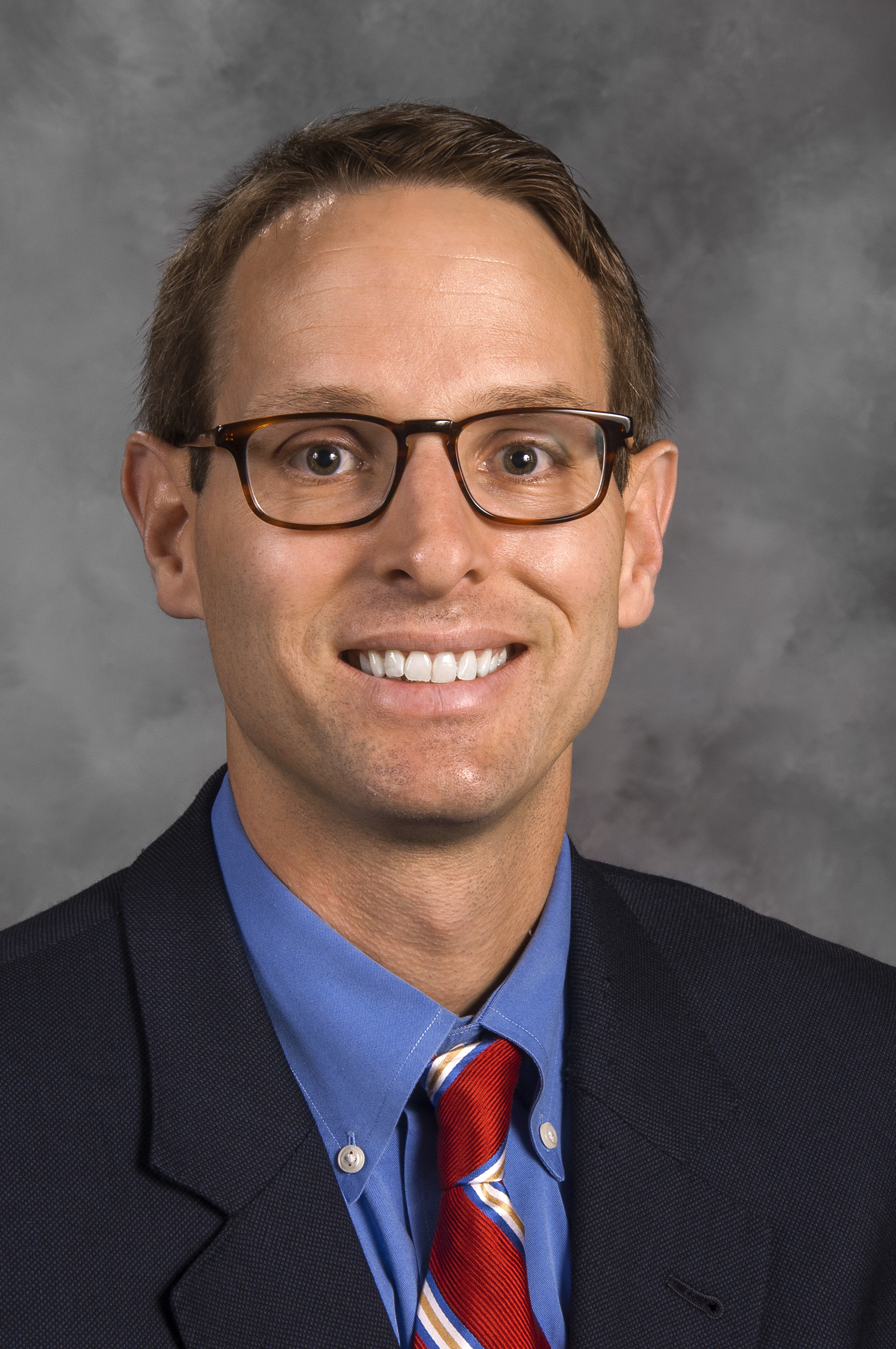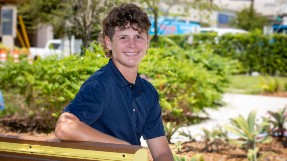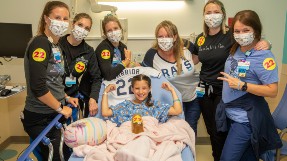Patient Story
Radial Longitudinal Deficiency: Andrew's Story
Patient Story Highlights
- Andrew was born with a condition called radial longitudinal deficiency, which causes an underdeveloped or absent thumb.
- The thumb is crucial for development of a functional grasp, which children use to develop independence in daily living skills like dressing, grooming, and play.
- Andrew’s surgeon, Lee Phillips, M.D., performed a surgical procedure to create a fully functional thumb on his left hand.
Ten perfect fingers, ten tiny toes. It’s one of the first things many parents want to see with a newborn. Andrew—a beautiful baby with bright blue eyes and a winning smile—had all those things, except when it came to his left thumb.
The team in the delivery suite told parents Megan and Anthony that the thumb was unusually small, a concern they would want to keep in mind in the months ahead.
“When he was just a few months old, we thought Andrew just had a small thumb on his left hand,” Megan recalls. “But after an examination with a specialist, we discovered that it was associated with a bigger problem. The thumb wasn’t able to move correctly.”
The thumb is crucial for the development of a functional grasp, which includes opposition (pinching) of the thumb to the tip of the other fingers. A functional thumb is important for picking up objects, playing with toys, and using developmentally appropriate tools such as utensils, crayons, pencils and scissors. Children also use a functional grasp to develop independence in daily living skills such as dressing and grooming, and for many activities—from coloring and building with blocks to throwing a baseball. Without the use of a thumb, these activities are challenging or impossible and may impact a child’s self-esteem.
Not long before Andrew’s first birthday, his parents were referred to Lee Phillips, M.D., a pediatric orthopaedic and hand specialist at Johns Hopkins All Children’s Hospital. He fully diagnosed Andrew’s condition and had good news to share.
“Andrew was born with a condition called radial longitudinal deficiency,” explains Dr. Phillips. “It causes either an underdeveloped or absent thumb, and sometimes a shortened or absent radius, which is the bone on the thumb-side of the forearm.”
Radial longitudinal deficiency is a spectrum which presents differently in each child and is often associated with other medical issues. Fortunately this was not the case with Andrew. It was likely that surgery followed by a short course of occupational therapy was all he would need.
“We were nervous when we learned this can sometimes involve other developmental deficiencies, but Dr. Phillips was extremely thorough in his assessment of Andrew’s case,” Anthony explains. “After numerous tests, he determined that Andrew’s condition was limited to his arms and hands.”
Dr. Phillips and the physician who originally referred Andrew to him discussed the treatment options in depth and recommended a pollicization of the left index finger to create a fully functional thumb on his left hand.
“For a pollicization, after you remove the non-functioning thumb, you shorten the index finger and reposition it where the thumb should be. The joints of the index finger are used to recreate all of the joints of a thumb,” Dr. Phillips continues. “The muscles are reconstructed so that Andrew can have a fully functioning thumb created from his index finger. Andrew’s age was ideal for the surgery as younger kids are more likely to adapt to their new thumb.”
“Andrew was referred to me because of the skills I acquired during my pediatric hand fellowship and my experience performing this particular surgery,” Dr. Phillips explains. “It is available at a limited number of hospitals.”
The procedure went very well, with the nursing team providing the anxious parents with updates. Dr. Phillips took time to discuss the procedure and answer questions after the surgery, and shared pictures of the new thumb.
“As with any parents of a child going in for a medical procedure, we were nervous,” Megan says, “but the medical staff at Johns Hopkins All Children’s was unbelievably caring. Knowing that he was in the capable hands of professionals dedicated to the care of children helped put us at ease. They even blew bubbles on the way to surgery to make him smile and presented him with a Certificate of Bravery.”
Andrew’s left hand was in a cast for five weeks. The bandages were removed during the summer and almost immediately he began to bend the thumb. While there might be some fine-tuning as he begins to use his thumb, it is likely this will be the only surgery he needs.
As for the aesthetics, Dr. Phillips is very positive.
“Most children who have this operation refer to the pollicized digit as ‘their thumb.’ In many ways, with a poorly formed native thumb, the index finger begins to adapt to perform many of the functions of a thumb. The literature supports that a pollicized digit functions much more normally than efforts to reconstruct an unstable thumb and preserve all the digits. Most people at a glance do not notice there are fewer fingers. All they see is an appropriately positioned and functioning thumb and a normal cascade of fingers.”
That’s certainly the case for Andrew. “His recovery has been phenomenal,” says Dr. Phillips. “Parents are rightly concerned about sacrificing a finger to create a thumb, but the benefits are amazing.”
“The fact that a little over two months ago his thumb was not functional, and now he can move and use it is incredible to us,” says an enthusiastic Megan. “We have been to several occupational therapy sessions at Johns Hopkins All Children’s and are doing daily exercises at home. His progress is noticeable on a daily basis.”
Thanks to that progress, Andrew will be able to show you that even a rare and unusual surgery performed by the specialists at Johns Hopkins All Children’s Hospital gets two thumbs up.
Andrew's Surgeon
Johns Hopkins All Children's Orthopaedic and Scoliosis Surgery
When your child needs orthopaedic care — for anything from a broken bone, to hip or hand surgery, to scoliosis — the pediatric experts in the orthopaedic and scoliosis surgery program at Johns Hopkins All Children’s Hospital in St. Petersburg, Florida, provide the treatment and care to help your child get back to being a kid.





